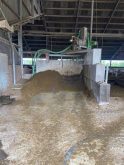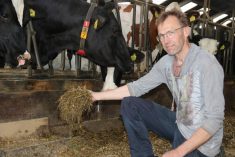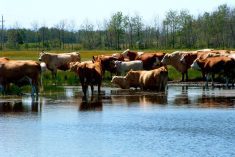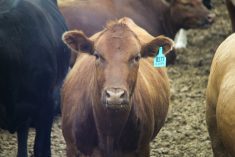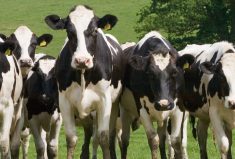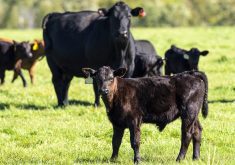Precision agr icul ture isn’t ready for natural fertilizer.
That’s the finding of a recently completed study by Nivervillebased Agra-Gold Consulting researcher Scott Dick, who along with Farmer’s Edge Precision Consulting, tested whether the cutting-edge technology could work with a drag-hose application system to apply hog manure.
In the MRAC and Manitoba Pork Council-funded study that began in 2008 at a cost of $55,000, the researchers tested new technology to see if it could be used to put more fertility on the best parts of a field where increased crop growth could soak it up, and less on the weaker spots.
Read Also

Pig transport stress costs pork sector
Popular livestock trailer designs also increase pig stress during transportation, hitting at meat quality, animal welfare and farm profit, Agriculture and Agri-Food Canada researcher says
From an environmental standpoint, applying less manure on areas of lower productivity could reduce the risk of nutrient run-off.
First, NDVI satellite imagery was used to divide fields into two to four zones based on the vegetative index, or yield potential, in much the same way it is currently done in planning commercial fertilizer applications.
Soil tests were then conducted in each zone to confirm nutrient status and organic matter levels, and the data used to create a prescription map for applying in this case liquid hog manure.
But the only way to vary the rate of application, which was based on the nitrogen content of the manure, for each zone was by adjusting the speed of application and it didn’t provide enough accuracy.
Without automated hydraulic valves and computerized switches that control application rates for variable-rate systems applying commercial fertilizer, adjusting the speed manually was the only practical means of varying the rate, he said.
“You may have your pump back at the source maybe a mile or two miles away,” said Dick. “If you put a valve in-line and then automatically varied it, it could change the pressure dramatically and blow your hose.”
Problems included the natural variability in hog manure nutrient concentrations, which makes quantifying the exact amount of fertilizer equivalents that were applied could only be determined after the fact, when samples were sent to a lab for analysis.
Also, the fact that in manure, nitrogen and phosphorus are mixed together, meant that in applying sufficient nitrogen in one zone to meet crop needs, there was a risk of adding excessive phosphorus to the same area.
An on-the-go testing device would help improve accuracy. But, currently, no such gadget is available commercially. However, at least one manufacturer is working on a device using near infrared spectrometry (NIR) that could offer real-time manure nutrient content data, he said.
In his report, Dick added that although most farmers saw environmental and agronomic benefits from the application strategy, they did not justify the extra cost.
In the meantime, farmers might be better off applying manure at a lower base rate of 80 pounds of nitrogen, then come back later and put down a more precise, variable-rate application of starter fertilizer to make up the difference, he added. [email protected]
———
“Ifyouputavalve in-lineandthen automaticallyvaried it,itcouldchangethe pressuredramatically andblowyourhose.”
– SCOTT DICK






